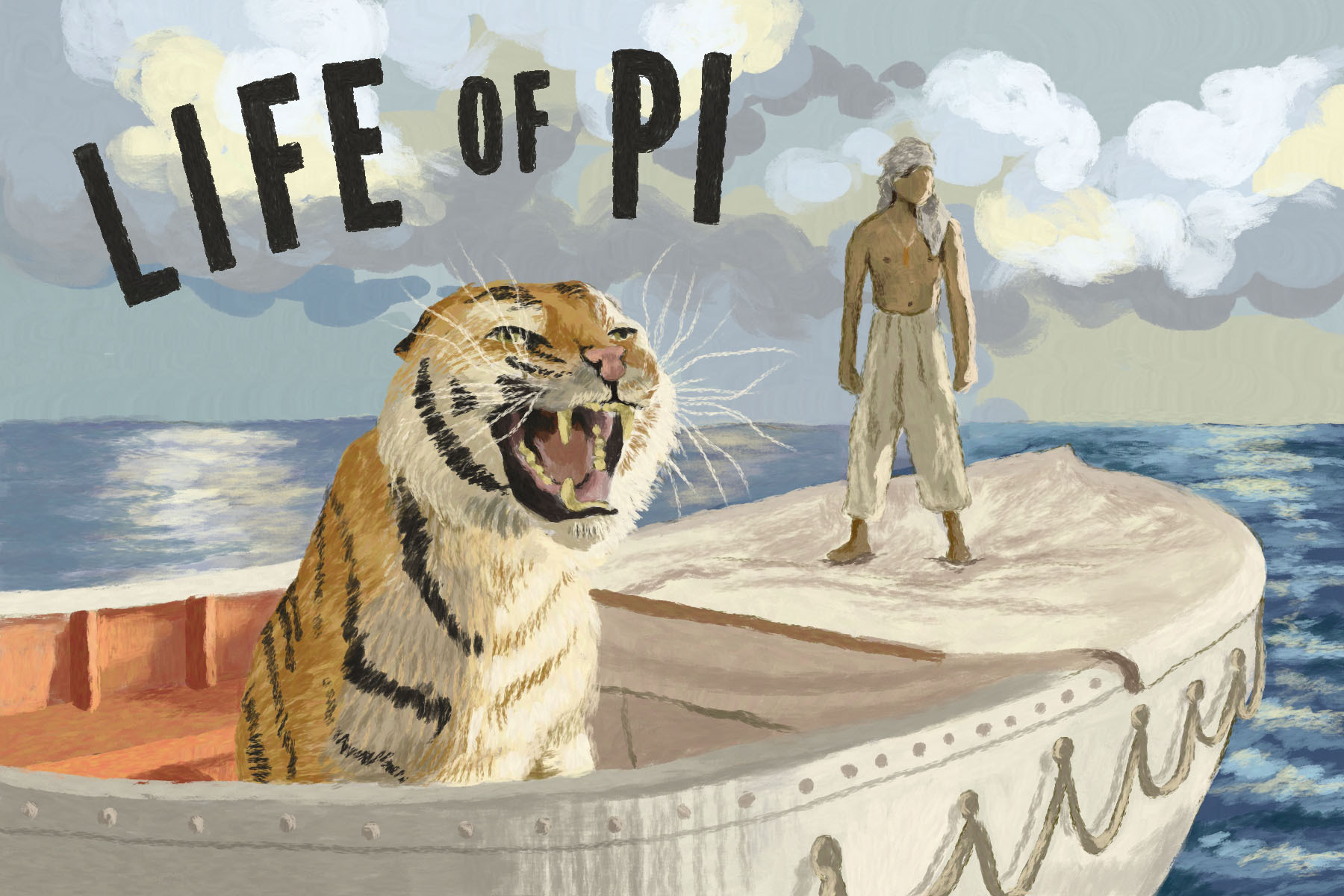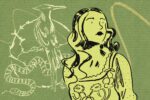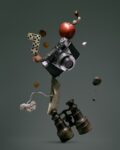After nightfall, people gaze at the web of constellations above them. Some are awestruck by the grandiosity of the night sky; others are perplexed, dubious of the universe’s potential. Many more feel helpless, at odds with the weight of the world. In an era where many relish routine and find it difficult to perceive purpose in their lives, spirituality has become increasingly prevalent. Whether they practice an established religion or simply save several TikTok tarot readings, people are champions of faith. It is difficult to accept reality when reality is blasé most days for most people. Routine is comforting, but in the grand scheme of life, change is inevitable. When overbearing adversity strikes, people’s sense of spirituality deepens. Hope constantly vies against doubt , so most people rely on hope to help them endure rough patches.
Based on Yann Martel’s novel of the same name, Ang Lee’s film “Life of Pi” follows a young Indian boy’s spiritual journey on a small lifeboat after he loses his family in a shipwreck. On the boat is a tiger named Richard Parker, whom Pi journeys with until his eventual rescue. While recovering in a hospital, insurance agents interrogate Pi about the truth of his ordeal. In his first recollection, Pi states that every being he encountered was an animal. Stuck on the lifeboat with a zebra, hyena and orangutan, he watched the hyena kill the zebra and orangutan. Richard Parker emerged shortly after, killing the hyena. Sensing the interviewers’ suspicion, Pi retells his story and replaces the animals with humans. He poses both stories to them and asks them which one they prefer. In the final report, the interviewers state that Pi survived 227 days with the tiger.
Pi’s recollections are enigmatic, forcing viewers to essentially adopt their own stances on which story is more accurate. Realistically, the second story makes more sense. After all, when in desperate situations, humans require sustenance and will do anything to attain it. But whether the investigators found this story more compelling due to its truth or sheer grotesqueness is up for moral debate. People are captivated by conspiracy, enraptured by the unordinary. As discussed in an American Psychological Association podcast, human beings’ interest in conspiracies often stems from feelings of insecurity: people do not want to lose control of their lives. Conspiracies are an outlet for people to maintain a feeling of stability. With this in mind, the stance of the investigators becomes clearer. The investigators wanted to cross out the most macabre of options from Pi’s fantastical account for their own sakes — perhaps to temper their own doubts.
Taking Pi’s upbringing into consideration, however, the spiritual account becomes more endearing. Pi is a curious boy who involves himself in three different religions: Hinduism, Islam and Christianity. He believes in growing as close to a higher being as possible and allows himself to be a religious wanderer. Pi’s approach elicits scorn from his father and mentors from each religion. Regardless of their opinions, Pi remains firm in his unorthodox practice. In a PBS interview, professor Barbara Mujica of Georgetown University explains that Pi finds pieces of truth in each religion that unify rather than separate them. Pi treats religion as an ecosystem, a cosmos that contains himself and the natural world, in order to understand life at a deeper level. Therefore, the film explores the intersections between religion and zoology — both literal and metaphysical. Pi’s family owns a zoo until his parents sell the animals to immigrate to Canada. His father, hyper aware of the nature of animals, releases a goat into a tiger’s enclosure and makes his kids watch the tiger consume the goat. As shocking as this action is, there is an underlying principle to it.
In a 1928 article published by the American Association for the Advancement of Science, Dr. Charles Wardell, secretary of the International Commission on Zoological Nomenclature, summarized the connection between zoology and religion in one word: obligation. The tiger and goat were bound to the rules of nature, just as people are bound to the rules their religions outline. Without religious rules, life is objectively more difficult for most people. Pi compares an animal in a cage to people who practice a religion: just as caged animals are safer from the dangers of the wild, people are safer from reality in the transcendental bubble of religion. Spirituality enables Pi to understand life and its challenges through a more whimsical lens. Just like an animal does, a person needs to face life head on. The manner by which human beings confront life becomes much more creative through the lens of spirituality. In this light, the film transforms into a testament to the marvels of faith rather than a mere chronicle of survival.
Thus, “Life of Pi” becomes a tale less about truth and more about the tenacity of human beings in times of suffering. In an interview with Booker Library archivist Jo Hamya, Yann Martel stated that he wanted the book to feel as if it was “written in one breath.” He expresses that art and religion are the avenues by which people are most able to tap profoundly into their humanity. This sentiment brought the book to life; two decades later, “Life of Pi” remains one of the most philosophical and magical novels to date. Martel portrays religion robustly in the novel, as he admires the qualities of several religions. He believes that society focuses too much on facts, condemning the world to objectivity. Martel, however, purports that a greater force exists that, regardless of its particular manifestation, enables people to keep finding purpose in life. Where there are perforations in comfort and logic, spirituality prevails.

















I really like how you unpacked this, it feels less about “what really happened” and more about how faith shapes the way we survive. The connection between animals in cages and people within religion is such a powerful image, and it makes the idea of spirituality feel tangible instead of distant. What stood out to me most is how Life of Pi shows that sometimes the story we choose to believe says more about our humanity than the facts ever could.